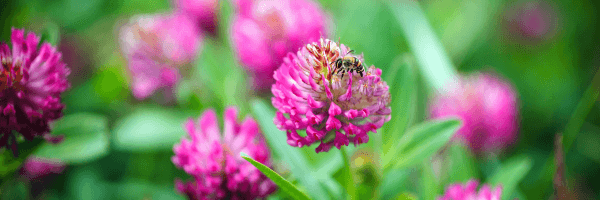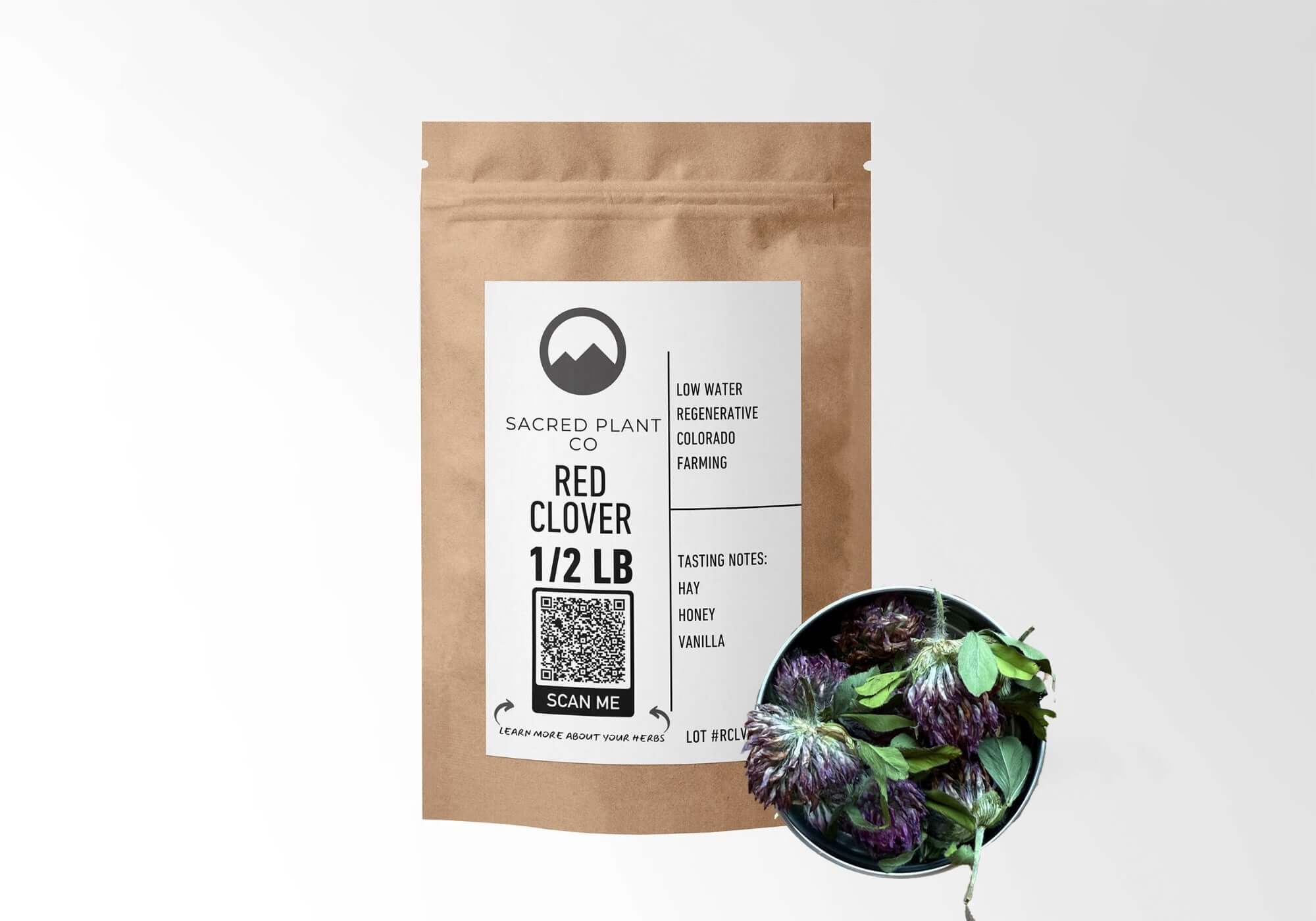Top 10 Red Clover Benefits (Evidence-Informed) + How to Use Safely
Last updated: August 22, 2025
Red clover (Trifolium pratense) is a brightly flowering legume long used in European and North American herbal traditions. Today it’s most often explored for menopausal comfort, lipid balance, and gentle nutritive support. The science is mixed overall, yet many people value red clover as a mild, food-like herb that can be prepared as tea or taken in standardized extracts. This guide summarizes what research and traditional use suggest, how to use red clover responsibly, and key safety notes—so you can make informed choices.
We carefully hand-pick and dry our Red Clover Blossoms to preserve their natural color and aroma. If you’re trying red clover for the first time, a simple cup of tea is an approachable starting point, and a standardized tincture can help when you want a consistent serving.
The Healing Power of Red Clover (at a glance)

Red clover blossoms contain isoflavones (such as biochanin A and formononetin) that act as plant estrogens. Some clinical trials using standardized extracts report modest improvements in select menopausal symptoms, while others find little or no effect. Research on lipids and bone markers is also mixed. As with many botanicals, the best approach is practical and cautious: start low, monitor how you feel, and speak with your clinician if you have medical conditions or take prescription medicines. For balanced overviews, see resources from NCCIH, MSKCC, and the Cochrane Library.
Top 10 Red Clover Benefits (what people use it for)
1) Menopausal comfort (hot flashes & mood)
Red clover is frequently explored for menopausal symptoms because its isoflavones can weakly bind estrogen receptors. Some standardized extract trials report fewer hot flashes or improved quality-of-life scores, particularly in participants with frequent vasomotor symptoms. Others show minimal change compared with placebo. If you’re considering red clover for menopause, it’s reasonable to try an extract with a known isoflavone content for 8–12 weeks, track symptoms, and reassess with your clinician. Helpful background: NCCIH on menopausal symptoms; Cochrane review.
2) Lipid profile support (cholesterol)
Small studies have examined red clover isoflavones for lipid balance. A subset reports reductions in total cholesterol, with mixed effects on LDL, HDL, and triglycerides. Because findings are inconsistent and lifestyle change remains first-line, think of red clover as a complementary strategy: maintain a fiber-rich diet, move regularly, prioritize sleep, and use red clover only under professional guidance if you aim to adjust lipids.
3) Bone health markers
Bone mineral density changes slowly. Some research has looked at red clover’s influence on bone turnover markers and estrogen-sensitive pathways in post-menopausal participants. Results are mixed, and any potential effects appear modest. If bone health is your goal, red clover may be considered alongside calcium-rich foods, vitamin D sufficiency, weight-bearing exercise, and clinical monitoring.
4) Skin comfort (traditional use)
Red clover tea and washes appear throughout traditional herbals for minor skin irritation. Modern clinical trials are limited. If you explore topical uses, patch-test first (inner forearm, 24 hours), and keep expectations realistic. Many people simply brew a strong tea, cool it, and use it as a brief compress for temporary comfort; discontinue if irritation occurs.
5) Gentle detox support (traditional)
Historically, red clover has been included in “alterative” formulas—slow, gentle blends used by herbalists to support normal elimination pathways. There’s little modern clinical research on “detox” outcomes; still, many people enjoy red clover tea as a mild daily tonic. For a tradition-informed approach, pair with hydration, fiber, and adequate sleep, which collectively support the body’s natural clearance systems.
6) Respiratory soother (traditional)
In older texts, red clover shows up as a tea for seasonal coughs and throat comfort. Its value today is primarily as a warm, aromatic beverage that encourages fluids and can be combined with kitchen herbs like thyme and lemon. If respiratory symptoms are persistent or severe, seek medical care; red clover tea is a comfort measure, not a stand-alone treatment.
7) Anti-inflammatory signals (preclinical & mixed human data)
Lab studies report antioxidant activity and modulation of inflammatory pathways with isoflavones. Human data are limited and heterogeneous. Consider red clover a small supporting actor in an overall anti-inflammatory lifestyle that emphasizes plants, movement, stress management, and sleep.
8) Circulatory tone and vessel health (emerging/limited)
A few small trials suggest possible effects on vascular reactivity or endothelial markers. The findings are preliminary and not a substitute for evidence-based cardiovascular care. If circulation is your focus, discuss red clover with your clinician—especially if you take blood-thinning medication (see safety below).
9) Calm support and sense of balance
Many people describe red clover tea as grounding and gently calming, especially in evening blends. While this is largely experiential, the ritual of a warm, caffeine-free cup can set the stage for better wind-down habits and more consistent sleep routines.
10) Everyday nutritive support
As a member of the pea family, red clover has a long history as a nourishing, tonic herb. When prepared as tea, it offers a mild flavor that pairs well with mint, lemon balm, or citrus peel. For many, that makes it an easy, sustainable way to include a plant-forward habit in daily life.
How to Use Red Clover (tea, extracts, topical)
Tea (most approachable)
Ratio: Use 1 tablespoon dried blossoms per 8 ounces hot water. Method: Pour near-boiling water, cover, and steep 10 minutes; strain. Timing: Enjoy 1–3 cups spread through the day, between meals if reflux is a concern. Flavor ideas: Add a slice of lemon, a thin coin of fresh ginger, or a few peppermint leaves for brightness. Cold-brew: Use 1 rounded tablespoon per 12 ounces cold water; refrigerate 6–12 hours, then strain and serve over ice.
Extracts and capsules (standardized)
Research often uses extracts standardized to total isoflavones. Labels vary widely, so follow product directions and seek guidance if you’re aiming at a specific outcome (for example, frequent hot flashes). Many clinicians recommend a time-boxed trial (8–12 weeks) with symptom tracking, then re-evaluating the plan together. Remember that results are mixed; not everyone notices a change.
Topical ideas (traditional)
For temporary skin comfort, brew a strong cup (2 tablespoons blossoms per 8 ounces water), cool completely, and apply as a short, 10-minute compress; discontinue if irritation occurs. Patch testing first is a good practice. For DIY skincare, some add a few drops of tincture to an unscented cream—again, patch test and keep it simple.
Practical Tips
- Quality matters: Choose clean, well-dried blossoms with a pleasant aroma. Our Hand-Picked Red Clover Blossoms are carefully harvested and dried to protect their color and character.
- Start low: Especially if you’re new to isoflavones or take prescription medicines.
- Pair wisely: Mint for brightness, lemon balm for a soft, lemony profile, or citrus peel for aroma.
- Storage: Keep blossoms in an airtight container, away from heat, light, and moisture. Best within 12–18 months.
- Track your response: A simple symptom log helps you and your clinician decide whether to continue.
Considerations & Safety
Herbs can be helpful supports when used thoughtfully. Red clover may not be appropriate for everyone. Keep these points in mind and speak with your healthcare professional for individualized advice.
- Hormone-sensitive conditions: Because red clover contains isoflavones, people with hormone-sensitive conditions (or those using hormonal medicines) should consult their clinician before use. See monographs from MSKCC and NCCIH.
- Anticoagulants & procedures: Red clover may increase bleeding risk when combined with blood-thinning medications or before surgery. Discuss timing and appropriateness with your clinician.
- Pregnancy & breastfeeding: Avoid unless your clinician advises otherwise due to limited safety data.
- Allergies: As with any plant, allergic reactions are possible. Discontinue if you experience itching, rash, or swelling.
- Interactions & duration: If you take prescription medicines, confirm suitability. Long-term safety data are limited; periodic check-ins are wise.
Educational purposes only. Not medical advice.
FAQs
Does red clover help with hot flashes?
Results vary. Some trials of standardized isoflavone extracts report modest reductions in hot flashes, while others find no clear difference vs. placebo. A time-boxed trial with tracking is reasonable if your clinician agrees. Balanced overviews: Cochrane, NCCIH.
Can red clover improve cholesterol?
Evidence is mixed. Some studies show reductions in total cholesterol; effects on LDL/HDL are inconsistent. Diet, exercise, and medical care remain first-line, with red clover considered complementary under guidance.
Will it strengthen bones?
Findings on bone markers and bone density are inconsistent and appear modest at best. If bone health is your priority, focus on nutrition, vitamin D status, weight-bearing activity, and clinical monitoring; discuss any botanical adds with your clinician.
How do I make red clover tea?
Steep 1 tablespoon dried blossoms in 8 ounces near-boiling water for about 10 minutes, covered. Strain and enjoy. For cold-brew, use 1 rounded tablespoon per 12 ounces cold water and steep in the fridge for 6–12 hours.
Who should avoid red clover?
Those who are pregnant or breastfeeding, people with hormone-sensitive conditions, or anyone taking blood thinners should avoid red clover unless a clinician approves. See MSKCC and NCCIH for details.
Is tea or tincture better?
Tea is gentle and food-like. Tinctures provide standardized amounts similar to research products. Choose based on goals and tolerance, and reassess after 8–12 weeks.
What does it taste like? What pairs well?
Red clover tea is mild and slightly sweet—somewhere between hay and floral. It pairs well with peppermint, lemon balm, citrus peel, or a thin slice of fresh ginger.
Helpful next reads & collections
The bottom line
Red clover is a gentle herb with a long history of use and a growing, though mixed, research base. If your goals include menopausal comfort, a more plant-forward routine, or a mild evening tea ritual, red clover may be worth exploring. Use it thoughtfully, keep your clinician in the loop, and favor products with clear sourcing. If you’d like to try the herb in its simplest form, our Hand-Picked Red Clover Blossoms are an easy place to begin.






